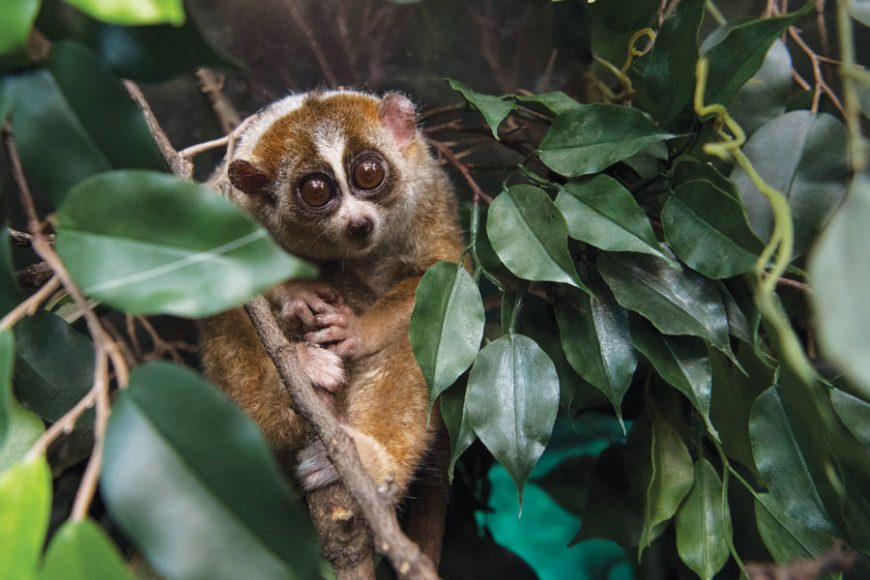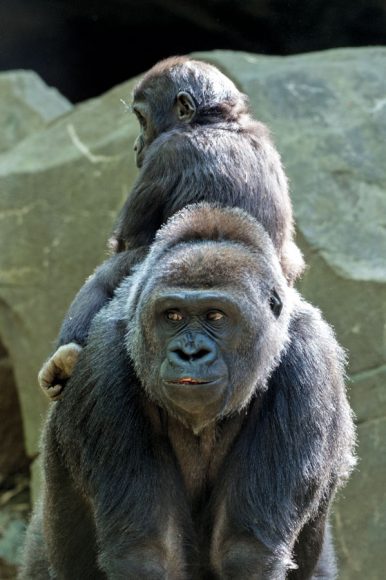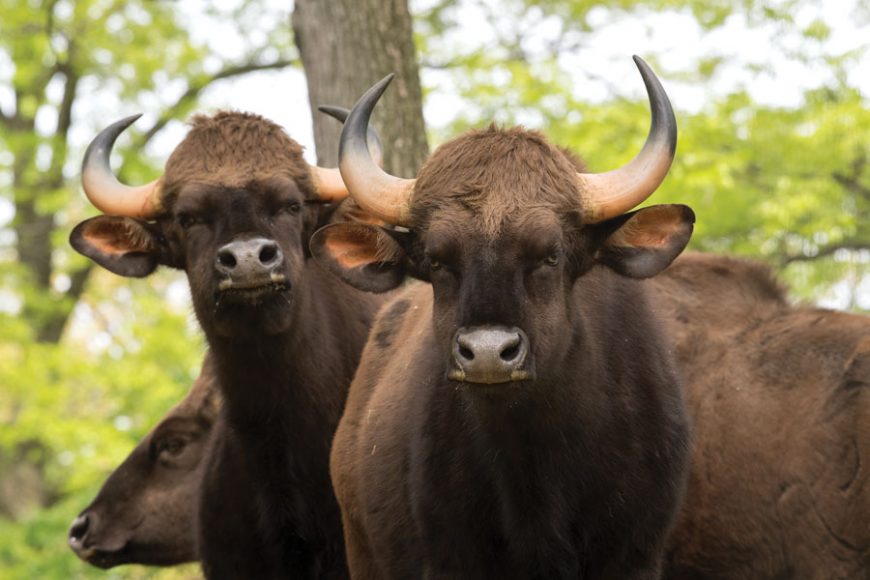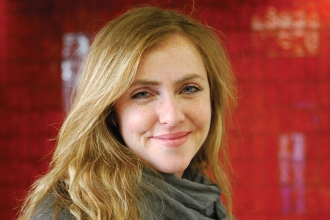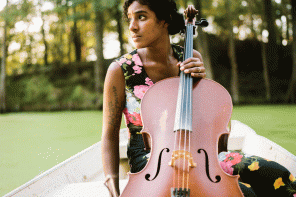Welcome to the jungle — or jungles.
First, there’s the urban one where a kind of cultural kaleidoscope plays out amid yellow cab-laden traffic and the prewar buildings of the West Bronx. Then there’s the one just beyond the bronze gates tinged with a green patina and the tiered Italian fountain.
In this neighborhood, the cacophony fades from the boogie-down sounds of car horns and rumbling subway cars to … was that a sea lion? And more.
Beyond the gates, lapis-colored, free-ranging peacocks are the loiterers in this part of the borough. They hang out in alleyways, perch on fences and join the waves of foot traffic without any sense of rush. Their regal tails trail behind on the impressive glaciated terrain, dragging on paths that snake by rocky outcrops of Fordham gneiss, geological features that have been integrated into open-air environments where the likes of grizzly bears spend their days.
The juxtaposition of these two seemingly disparate places in New York City is head-spinning and adds to a biblically scaled magic.
This is the world-renowned Bronx Zoo — the biggest urban zoo in the country covering 265 wooded acres that house some 8,000 animals representing more than 700 species. More than 2 million visitors walk through its gates annually.
The zoo is part of an integrated system that includes the Central Park, Prospect Park and Queens zoos plus the New York Aquarium. All are managed by the Wildlife Conservation Society (WCS), which also operates field conservation programs in 60 countries and all five of the world’s oceans.
The WCS (formerly the New York Zoological Society) was founded in 1895 in part to create a zoological park in response to the destruction of large swaths of the American wilderness. In 1896, the Smithsonian Institution’s chief taxidermist, William Temple Hornaday, was chosen to become the first director of The Bronx Zoo, known formally as the New York Zoological Park, when it opened in 1899.
Hornaday was a leader in conservation at a time when taxidermy served as a major tool in that effort. It was an age when the extinction of a dwindling species was widely viewed as inevitable. Preserving an animal through taxidermy was a way to immortalize it for generations to come.
But Hornaday became galvanized when he noticed the nation’s bison population decreasing at an alarming rate, recklessly wiped out by hunters in the American West. His approach toward conservation expanded to include more proactive efforts.
Hornaday founded the American Bison Society along with President Theodore Roosevelt who, as Boone and Crocket Club president, helped sponsor the New York zoological enterprise. By breeding the bison in New York then sending them out west, Hornaday helped bring the animals back from the brink of extinction. It was the first major wildlife conservation success in the history of the world.
Still today, the Bronx Zoo’s driving purpose is conservation and its beginnings helped pioneer the character of the modern zoo. Gone are the days of a zoo’s depiction as sad animals behind iron bars.
In the Bronx, the mangrove swamp and beaches of Jungle World are home to northern white-cheeked gibbons, tree kangaroos and Malayan tapirs. Replicated habitats are open fronted, separated from visitors by streams, cliffs or ravines.
In the Congo, critically endangered Western Lowland gorillas lounge amid a 6½-acre habitat that mimics their natural living conditions. Snow leopards traverse the rocky terrain of the Himalayan Highlands area and lions roam the zoo’s African Plains on an island separated by a moat from the savanna where antelopes and zebras safely graze.
The zoo’s location plus its clever incorporation of ancient rock and the bucolic Bronx River are terrain specific to New York. And support from iconic New York figures with names like Astor and Rockefeller add to the zoo’s fame as a symbol of the metropolis. John D. Rockefeller, J.P. Morgan and Andrew Carnegie all contributed startup capital.
The landmarked Rockefeller Fountain, composed of carved sea creatures, was brought from Como, Italy where it was bought in 1902 by William Rockefeller and eventually placed amid the Italian gardens of Astor Court, named for benefactor Brooke Astor. She became a trustee of the WCS in 1969 and her support led to the development of important exhibits like World of Darkness and Wild Asia.
The landmarked Art Deco Rainey Memorial Gate at the zoo’s entrance was designed by American sculptor Paul Manship, and features full-size sculpted bronze animals. Manship is also credited for designing the modern rendition of New York City’s official seal.
The two Beaux Arts pavilions that flank Astor Court were designed by architectural firm Heins & LaFarge, which was responsible for original design plans for The Cathedral Church of St. John the Divine and the architecture for the first precursor to the New York Subway System, the Interborough Rapid Transit Co. Other Beaux Arts buildings house the zoo’s administration offices and the reptile house, which is the oldest building used for its original purpose.
Over the years, the zoo has presented spectacular and even controversial displays. It housed the now extinct Tasmanian tiger (the thylacine), the last of which died in 1919.
A spectacular glacial erratic from the last Ice Age called The Rocking Stone still rests outside the World of Darkness.
Its biggest controversy came in 1906 when a man named Ota Benga, a Congo pygmy native, was exhibited both at the Monkey House and on the general grounds before opposition ultimately led to his release to an orphanage.
The Bronx Zoo holds an indelible place in our nation’s history. Since its inception, the park’s successes and failures have reflected our society’s own. It’s been a leading force in the protection of our planet’s wildlife. Its world-class habitats have helped alter our perception of what a zoo could be and its mere existence in such an urban setting provides egalitarian access to our planet’s many diverse species and fosters an appreciation of nature in the midst of a thriving populace.
In 2020, WCS will be celebrating the 125th anniversary of its founding as the New York Zoological society.
An Animal Planet docu-series, “The Zoo,” just began airing its third season of a behind-the-scenes look at the animals and staff from all five WCS parks. Their stories provide a window into how important these places are to the conservation of all life — including our own. We are interdependent, after all.
Need proof? Get yourself to the Bronx and watch lions and tigers and bears walk by.
For more visit bronxzoo.com and wcs.org.

